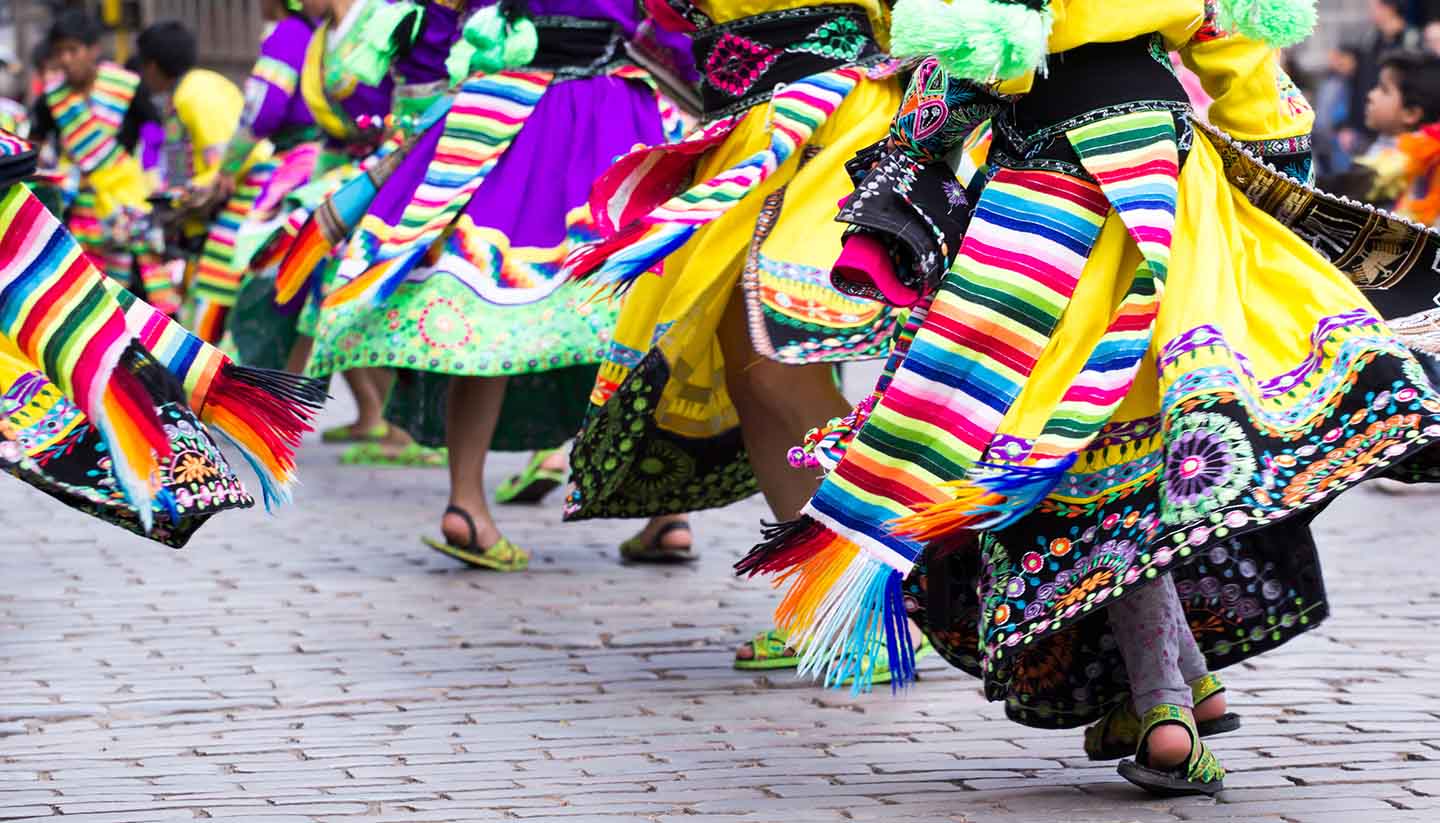Things to see in Cusco
Attractions
Cathedral of Cusco
Built between 1556 and 1669 on the site of the Inca Viracocha's palace, the monolithic cathedral dominates one side of Plaza de Armas. Full of treasures, it is one of the city's best repositories of colonial art and includes detailed carved altars and a sacristy full of portraits of priests from the past. It also holds the blackened crucifix that was paraded around Cusco in 1650 to stop a giant earthquake. There's also a very famous painting of the Last Supper by Marcos Zapata, at which Christ and his disciples are pictured feasting on Andean fruits and, instead of the usual Paschal lamb, there's a vizcacha (a kind of wild chinchilla), commonly mistaken for a cuy (guinea pig).
Address: , Plaza de Armas, Cusco,Telephone:
Opening times:
Mon-Sun 1000-1745.
Website:Admission Fees:
Yes
Disabled Access: YesUNESCO: No
La Compañía de Jesús
This Jesuit church is the other massive building on the Plaza de Armas. Built on the ruins of the palace of the Inca Huayna Capac, it is a grand building complete with decorative baroque facade. Work began in 1578 but a giant earthquake in 1650 practically demolished the building and it wasn't finished until 1668. Interesting paintings of local weddings show plenty of period detail, whilst the catacombs beneath the church are worth exploring and the view from the second floor choir area is worth climbing a set of rickety steps to see.
Address: , Plaza de Armas, Cusco,Telephone:
Opening times:
Mon-Sun 0900-1730.
Website:Admission Fees:
Yes
Disabled Access: YesUNESCO: No
Coricancha and Santo Domingo
The Inca Sun Temple, Coricancha, was the centre of the Inca religion. The building was once lavishly decorated with gold plates and precious stones, but the Spanish conquistadors pillaged the site and gave the temple to the Dominicans, who built the monastery of Santo Domingo on top of it. In 1950 an earthquake destroyed the monastery, but left the Inca stonework, some of the finest masonry in Peru, undamaged.
Address: , Plazoleta Santo Domingo, Cusco,Telephone: (84) 249 176.
Opening times:
Mon-Sat 0830-1730, Sun 1400-1700.
Website: http://www.qorikancha.orgAdmission Fees:
Yes.
Disabled Access: NoUNESCO: No
Templo de San Blas
This simple adobe church contains an intricate carved cedar-wood pulpit, the detail of which includes a cherub, a sun-disc, faces and bunches of grapes. At the top stands St Paul, his foot resting on a skull believed to belong to the craftsman responsible for the carving. The church also has a baroque gold-leafed altar.
Address: , Plaza San Blas, Cusco,Telephone:
Opening times:
Mon-Sat 1000-1730, Sun 1400-1730.
Website:Admission Fees:
Yes
Disabled Access: NoUNESCO: Yes
Museo de Arte Precolombino
Previously an Incan ceremonial court, a Santa Clara convent and the mansion of the Earl of Cabrera, this impressive museum still boasts segments of Inca wall. The rather poetic descriptions of items on display – which include silver, woodwork and ceramics – attempt to rank the pieces alongside fine art. The objects, however, speak for themselves. Displays are divided amongst the various indigenous cultures dating from the 13th century and delight in their imagination, intricacy and variety. The Mochica culture is the most advanced with skilfully sculpted pottery and ornaments adorned with animals including the ubiquitous llama.
Address: , Plazoleta Nazarenas 231, Cusco,Telephone: (84) 237 380.
Opening times:
Mon-Sun 0900-2200.
Website: http://www.map.org.peAdmission Fees:
Yes
Disabled Access: YesUNESCO: No
Machu Picchu Museum
It may have taken a hundred years, but the artefacts discovered by American explorer Hiram Bingham at Machu Picchu made their way back to Peru in 2011. Many can be seen in this small museum, which is the ideal prelude for visits to fabled Lost City of the Incas. Several hundred objects are on show, but don't miss the fascinating video explaining Yale University's research into the ancient city.
Address: , Calle Santa Catalina Ancha 320, Cusco,Telephone: (84) 255 535.
Opening times:
Mon-Fri 0900-1700, Sat 0900-1300.
Website:Admission Fees:
Yes
Disabled Access: YesUNESCO: No
Museo Inka
Taking visitors from the earliest cultures in Peru through to the reign of the Incas in the 13th century and beyond, this informative museum gives a wholesome understanding of one of the world's greatest empires. Telling the story through artefacts that range from ceramics and jewellery to weapons and hairbrushes, it's possible to grasp just how complex and sophisticated the Incas were. The room about textiles – more prized by the Incas than gold – is perhaps the most impressive; the explanations on what different patterns depict and represent are truly illuminating. Upstairs you'll come face to face with real mummies, their hands grasping around agape mouths as if in horror.
Address: , Cuesta del Almirante 103, Cusco,Telephone: (84) 224 051.
Opening times:
Mon-Fri 0800-1700, Sat 0900-1700.
Website: http://museoinka.unsaac.edu.peAdmission Fees:
Yes
Disabled Access: NoUNESCO: No
Coca Museum
For a break from Cusco's usual historical sights, visit the Coca Museum to learn more about the Inca's sacred leaf. The museum introduces visitors to the history of the coca plant and explains exactly why it is so important to the Peruvian identity, today and in times past. It also covers the botanical and medicinal properties of the plant and tackles the more recent issues of drug trafficking and cocaine addiction.
Address: , Calle Palacio 122, Cusco,Telephone: (84) 501 020.
Opening times:
Mon-Sun 0900-2000.
Website:Admission Fees:
Yes
Disabled Access: NoUNESCO: No
Tourist Offices
Direccíon Regional de Industria y Turismo (DRIT)
Address: , Portal de Mantas 117, Cusco,Telephone: +51 84 223 701
Opening times:
0900-2000.
Website: http://www.dirceturcusco.gob.peAlternatively, iPeru (www.peru.travel) have information offices in the main hall at Aeropuerto Velasco Astete and Plaza de Armas.
Oficina de Información Turística
Address: Cusco, Portal Mantas 188, Cusco,Telephone: +51 84 222032
Opening times:
Monday to Saturday 0800-1830; Sunday 0800-1400.
Website:Tourist passes
It's worth buying the highly cost-effective Boleto Turistico (www.cosituc.gob.pe), which provides access to the Museum of Contemporary Art and some Cusco ruins such as Saqsayhuaman and Pisac in the Sacred Valley. It's sold in both the DRIT and iPeru tourist offices, and at the attractions themselves.


